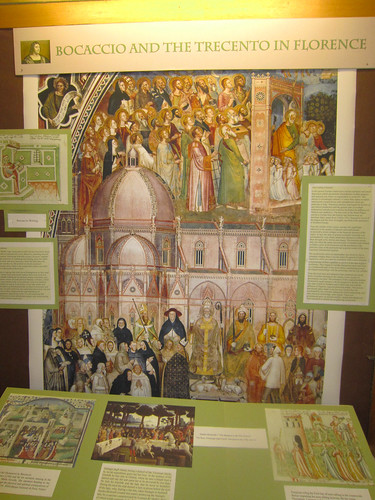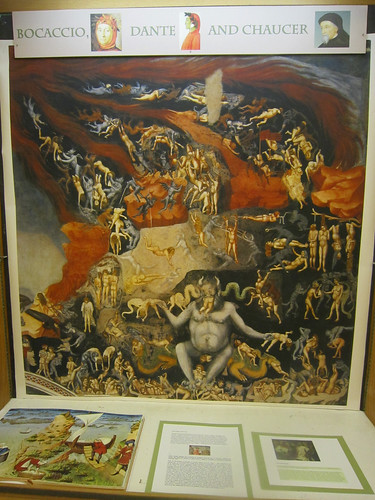This article is more than 5 years old.
For several months, I’ve been working with Wake Forest Professor Roberta Morosini, a Medievalist, on an exhibit about Boccaccio and the “Trecento” (14th century). The exhibit focuses on stories from Giovanni Boccaccio‘s most well known work, The Decameron. The Decameron, which was written in 1350, means ’10 days’ in Greek, and consists of a set of stories told over a period of ten days. The background of the stories in The Decameron is that a group of 10 young people leave Florence to escape the plague (The Black Death) that was killing so many people. The tales are about love, greed, the corruption of the clergy and your basic 14th century Italian drama. Each night, each member told a story to the group, so that after 10 days there were 100 stories.
I confess that I know more about Boccaccio and The Decameron now that a few months ago. In art school, I was more likely to read Lives of the Artists by Giorgio Vasari than The Decameron. At any rate, this book has influenced several other authors, like Geoffrey Chaucer. The stories in The Decameron were apparently borrowed from a number of traditional tales from countries in the region. Boccaccio wrote about the differences of men and women and has been shown to have an enlightened view of women for his time.
This exhibit is a companion to an international conference entitled: Boccaccio Veneto: 700 years of cultural crossing in Mediterranean Venice. The Venice conference will be held at Casa Artom June 20-22, 2013. Thanks to Martine Sherrill and Paul Marley from the Art Department for their help with this exhibit.



4 Comments on ‘Boccaccio and 14th Century Florence Exhibit’
Wonderful exhibit, Craig! Thanks for sharing.
It looks great! All the hard work paid off. 🙂
It is a beautiful exhibit, Craig. I saw a prospective and student admiring it this afternoon!
Thanks for the background, Craig. I will slow down enough to appreciate it!